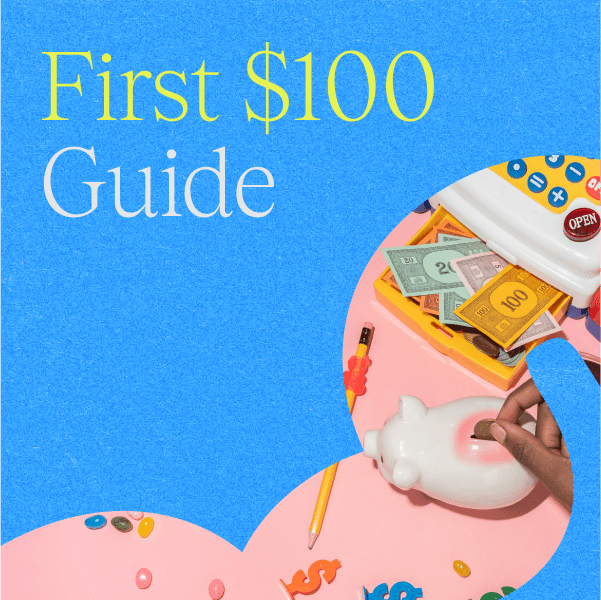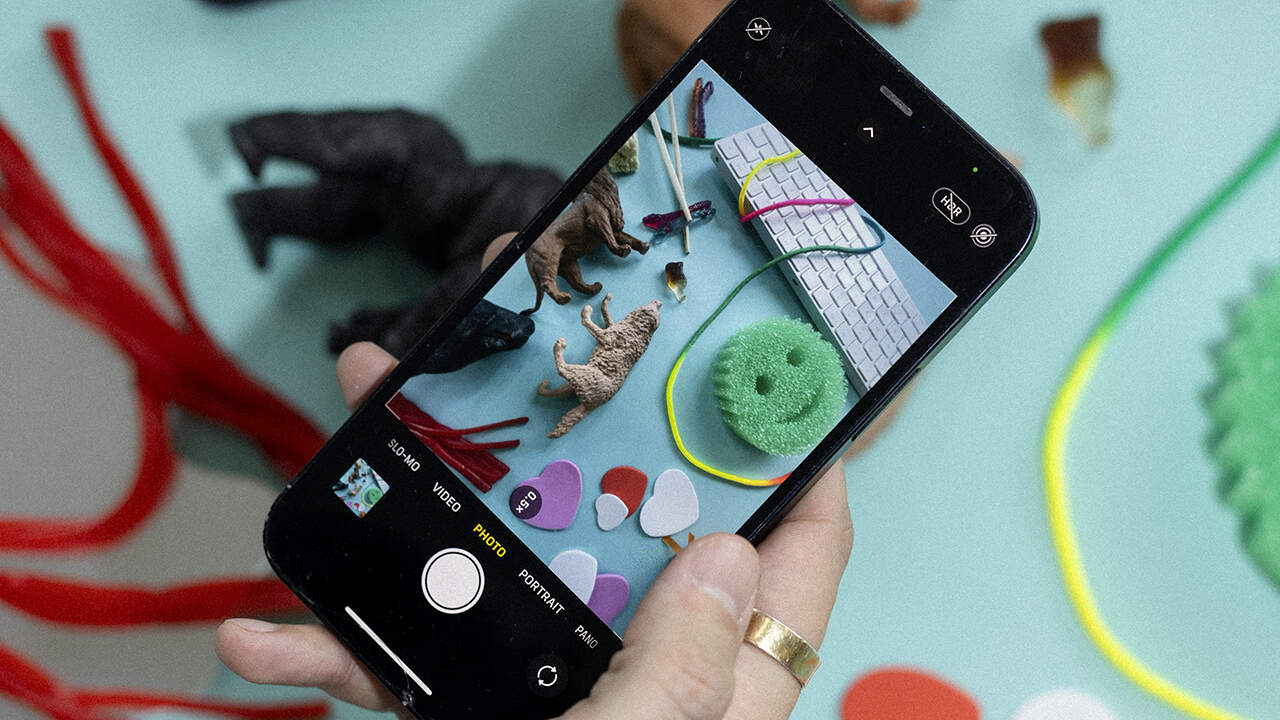Welcome to the creator economy, which is expected to nearly double in market size by 2027 (that’s up to $480 billion, some analysts say).
Whether you’re an established content creator or you’re just starting out, here are 23 of the best creator economy platforms to help you turn your passion and expertise into some serious cash.
Want more tips for making money as a creator? Download our free guide on 12 ways to make your first $100 online.
What is the creator economy?
Essentially, the creator economy features a vast group of people who use creator economy platforms (i.e. digital platforms) to showcase their unique expertise, skills, and personalities. Anyone — from an Instagram influencer making sponsored content, to a graphic designer selling Canva templates, or a personal trainer selling an online fitness course — can belong to the creator economy, and that’s the beauty of it.
Entrepreneurialism is at the core of the creator economy, which is why specific tools and creator economy platforms are essential for supporting a creator’s success. After all, no one gets anywhere in life without a little bit of help.
Read on to learn more about the top 23 platforms for content creators.
23 Best creator economy platforms in 2023
Best video monetization platforms
| Tool | About |
| YouTube | A free video-sharing and social media platform with several content monetization options. |
| Thinkific | An intuitive space to create and sell online courses, build dynamic communities, and monetize memberships — all on a single, scalable platform. |
| TikTok | A video-sharing app that allows users to create and share short-form videos on any topic. |
| A photo and video-sharing platform popular among creators for its vast audience reach. |
1. YouTube
For content creators, YouTube offers a space to share your passions, talents, and unique perspectives with a global audience. Whether you’re into gaming, tutorials, vlogs, music, or DIY hacks, YouTube can host it all.
Through ads, sponsorships, and affiliate marketing, YouTube can help you turn your passion into a paycheck. As your channel grows and gains subscribers, your earnings potential increases. YouTube also provides tools like YouTube Premium, Super Chat, and channel memberships that allow fans to directly support you, giving you even more ways to monetize your content.
Key features
- Content monetization opportunities
- Analytics and insights
- Audience engagement
- Live streaming
- Customization and branding
Pricing
YouTube is completely free to use.
Hot tip: Use our YouTube Money Calculator to estimate your earning potential!
2. TikTok
It’s hard to exist in this world without encountering a TikTok video. The short-form video platform has become one of the top video monetization platforms for video creators to showcase themselves, and for good reason too. Literally anyone can go viral on TikTok, regardless of how many followers you start out with.
One of the most popular creator economy platforms, TikTok has become a launchpad for content creators to shine and, yes, make some serious money. Through the TikTok Creator Fund and Creativity Program, you can earn money based on video performance and views. Brands and businesses are also eager to collaborate with TikTok influencers for sponsored content. Plus, you always have the option of using TikTok as a space to sell merch and digital products, or promote affiliate products to your engaged audience.
Key features
- Content monetization opportunities
- Short-form video creation
- Editing and effects tools
- Discoverability
Pricing
TikTok is completely free to use.
Wondering how much you can make on TikTok? Use our TikTok Money Calculator to estimate your earning potential!
3. Thinkific
When considering how to monetize videos, social media platforms are usually the first to come to mind. But what about platforms that are designed specifically for monetization? Case in point: the leading platform for online course creation, Thinkific.
This all-in-one platform is designed to enable creators, educators, coaches, and infopreneurs to build their own online courses and start making money from their expertise.
Thinkific tools include features to design, market, and sell your courses online, along with access to the Thinkific Studio, a community of successful course creators that you can lean on for support and advice when setting up your course academy. Thinkific creators can also use the Thinkific App Store with a wide range of product integrations to make marketing and monetizing your online course even easier.
Key features
- Multimedia capabilities (video, interactive files, externally hosted content)
- Built-in marketing and e-commerce features
- 24/7 customer care
- Mobile app
Pricing
You can get started with Thinkific for free, or sign up for the membership packages starting at $74 per month.
4. Instagram
You’d have to be living under a rock to not know what Instagram is. Like TikTok and YouTube, this photo and video-sharing platform is one of the most popular creator economy platforms, thanks to its vast audience reach and potential to make some serious cash.
As a content creator, you can monetize your Instagram presence through various avenues. Brands and businesses are eager to collaborate with influencers for sponsored posts and partnerships. You can also leverage affiliate marketing to earn commissions on products you recommend. Plus, features like Instagram Shopping allow you to sell products directly to your followers.
Key features
- Content monetization opportunities
- Audience engagement
- Insights and analytics
- Instagram Shop
- Influencer partnerships
Pricing
Instagram is completely free to use.
Best tools for creating and selling digital products
| Tool | About |
| The Leap | A free, AI-powered digital product builder and link-in-bio storefront aimed at content creators and influencers who have knowledge they want to share online. |
| Gumroad | A simple e-commerce platform that lets creators sell physical and digital products right to their audience. |
| Stan | An e-commerce platform catered specifically to creators selling digital products, online courses, and coaching sessions. |
| Beacons | A website creation tool that allows you to build a free two-tab website. |
| Canva | A user-friendly graphic design platform packed with easy-to-use tools, templates, and resources that help creators make stunning design assets like a pro. |
5. The Leap
The Leap is a free, AI-powered digital product builder and link-in-bio storefront aimed at content creators and influencers who have knowledge they want to share (and make money from) online. Essentially, it helps content creators (particularly creator educators) create and sell digital products quickly and easily.
The Leap’s digital product builder is designed to make the process of earning your first dollars as a content creator easier. It is a super user-friendly authoring tool that offers quick and intuitive digital product creation. There’s also a versatile e-commerce storefront and built-in promotion and selling tools, so you can do all your business in one place.
Content creators can use the Leap’s tool to easily build engaging digital products or sell their existing products to drive lead generation, earn money — or both! If you’re a creator looking to produce guides, tutorials, or mini-courses for your audience, then chances are The Leap is the platform for you.
Key features
- User-friendly authoring tool
- Link-in-bio e-commerce storefront
- Digital product promotion and selling tools
- AI-powered
- Mobile-friendly
Pricing
The Leap’s digital product builder is free! Try it yourself today.
6. Gumroad
Gumroad is many creators’ go-to for selling digital products directly to their audience. This easy-to-use e-commerce platform allows creators to build their online storefront (no website or domain needed) and sell virtually any kind of digital product, including ebooks, online courses, films, Notion templates, downloadable prints, music albums, and more. Just upload your product, set a price, and Gumroad will handle the rest.
Creators can also embed Gumroad’s checkout widget into their existing website. The platform also allows creators to set their own currency and supports a range of payment methods.
Key features
- Online storefront builder
- Customizable storefront and checkout pages
- Subscriptions, pre-orders, and payment plans
- Content security features
- Built-in marketing and analytics tools
Pricing
Free with a 10% transaction fee per sale (plus credit card processing and PayPal fees).
7. Stan
Stan is an e-commerce platform catered specifically to creators selling digital products, courses, and coaching sessions. Stan promises to have your personalized storefront up and running in just five minutes with its easy-to-use drag-and-drop store builder. From there, simply upload your digital product, set your price, and wait for the dough to roll in.
In addition to coaching sessions, Stan allows creators to sell many kinds of digital products, including ebooks and guides, templates and tools, exclusive content, and courses. Looking to sell the latter? Stan also provides creators with an e-course builder, allowing you to create, promote, and sell your courses online all in one place.
Key features
- Drag-and-drop online storefront builder
- Built-in audience analytics
- Built-in marketing tools
- Online course builder
- Robust third-party app integrations
Pricing
$29 per month.
8. Beacons
Developed to help creators set up high-converting landing pages, Beacons is a website creation tool that allows you to build a free two-tab website. Users can also subscribe to a paid plan for $10 per month to access more features.
With Beacons, creators can embed other creator economy platforms into their website, whether it’s a Twitch stream, a Buy Me a Coffee link, or a virtual event promotion. The fully customizable layout lets creators build a website that shows off their work, amplifies their brand, and helps them monetize their audience.
Key features
- Easy to set up a two-tab website
- Links to other creator economy platforms
- Fully customizable layouts
Pricing
Beacons allows you to accept donations from followers for free but takes a 9% commission fee on transactions from your online store. There are also two paid plans ranging from $30 per month to $100 per month, which offer various features like a personalized domain and 0% transaction fees on Store sales.
9. Canva
Canva is a user-friendly graphic design platform packed with easy-to-use tools, templates, and resources that help creators make stunning graphics, posters, logos, and social media posts like a pro. Whether you’re crafting engaging thumbnails for your YouTube videos, designing Instagram stories, or building a brand logo, Canva has got you covered.
When it comes to creating digital products, Canva is also a super handy tool. With Canva’s templates and customization options, you can quickly and easily design professional-looking ebooks, worksheets, calendars, journal pages, and other resources that resonate with your audience.
Key features
- User-friendly design tools
- Templates and elements
- Collaboration and sharing
Pricing
Canva is completely free to use, however, if you want more advanced design options, you can invest in the Pro or Team plans ranging from $12.95 per month to $30 per month. There is a free trial for both of Canva’s paid plans.
Best subscription and membership platforms
| Tool | About |
| Patreon | A community-based membership platform allowing creators to provide access to exclusive content with multiple integrations. |
| Substack | A platform for writers and podcasters who want to publish directly to their audience and get paid through subscriptions. |
| Buy Me a Coffee | Allows creators to accept support and memberships from fans. |
| Cameo | A website and app that allows fans to request personalized videos from content creators, celebrities, and influencers. |
| Ghost | An all-in-one platform to run a media business, collect subscribers, send newsletters, publish premium content, and earn recurring revenue. |
10. Patreon
A popular membership platform for creators, Patreon helps you earn a regular monthly income from your content. Essentially, Patreon cuts out the middleman of social media, brands, or other businesses by allowing fans and supporters to become members and donate to their favorite creators. Rather than relying on brand collaborations, creators can get paid directly by their community.
Patreon was first set up to help creators build a meaningful, loyal connection with their community outside of their social media pages. It is designed for different types of creators, from artists to podcasters, journalists, and more.
Key features
- Muti-media content (video, digital downloads, etc.)
- Private discussion forums
- Creator analytics and insights
- Integrations
- Membership tiers
Pricing
It’s free to get started with Patreon, and its fees are based on three tiers that provide different levels of features, ranging from 5% to 12% monthly commission fee. Note that Patreon also charges additional processing fees for every successful payment made through the platform.
11. Substack
Substack is a subscription-focused platform for creating and distributing your newsletter. It helps writers and podcasters publish content and receive payment for their creations. It combines a blog, newsletter, and payment system in one, while also boasting video-sharing features.
If you’re using Substack for writing, it’s a super easy way to monetize your skills and includes several features to help grow your audience over time. The platform provides helpful guides and tools for those just getting started, plus there are several content creators who offer tutorials on how to best use the platform.
Key features
- Monetization options
- Audience building
- Multimedia content (text-based, audio, video)
- Creator analytics and insights
- Mobile-friendly
Pricing
Publishing is completely free on Substack, no matter how many subscribers you have. However, Substack takes a 10% commission for every paid subscription.
12. Buy Me a Coffee
Buy Me a Coffee allows creators to create a membership, accept donations, and sell products online.
The secret to Buy Me a Coffee’s success lies in its simple concept — your audience can support you in a quick and fun way by buying you a virtual “coffee.” One of the biggest advantages of Buy Me a Coffee is how easy it is to use — users can donate money without setting up an account or signing up for a monthly subscription.
To help creators engage with more loyal fans and earn a recurring income, Buy Me a Coffee also offers monthly membership options.
Key features
- Monthly or yearly membership options
- Shopify online store integration
- Instant pay options
- One-tap payment
Pricing
Creators can set up a Buy Me a Coffee account for free and receive payments directly to their bank accounts through Stripe. It should be noted though that there is a 5% transaction fee for every payment.
13. Cameo
While Cameo isn’t exactly a subscription or membership-focused platform, it connects fans with celebrities, influencers, or content creators through customized videos, one-to-one calls, and private DM chat options.
It’s important to note that Cameo is dependent on you already having some kind of audience to attract paying fans. Originally, the platform was tailored specifically to celebrities, but influencers can also get in on the action.
Cameo’s quick, instant income model is the biggest advantage for creators looking to monetize fan interactions. It’s easy to use from anywhere, so literally you can be out to dinner or waiting in line for the bus and make some bucks.
Key features
- Customization options
- Direct audience engagement
- Flexible monetization options
Pricing
Prices are individual to each creator or celebrity, starting around $5 and increasing with the level of fame and fanbase size. Cameo takes a fairly high commission fee of 25% of every transaction.
14. Ghost
Ghost is one of the most simple-to-use and singularly focused paid newsletter platforms. Similar to Substack, it was initially created to empower writers to share their work without relying on ad revenue streams or being curtailed by media organizations.
The main difference between Substack and Ghost is that Ghost doesn’t charge any transaction fees. Every dollar you earn using the platform is yours to keep. Ghost’s other defining feature is that it is an open-source platform. If you have coding know-how in addition to your writing chops, you can make the newsletter platform work perfectly for your needs.
Key features
- Easy-to-use interface
- Open-source platform
- No transaction fees
Pricing
Ghost charges a flat monthly fee across four tiers of membership. Monthly memberships are reasonable, starting at $9 per month and going up to $199 per month.
Best link in bio tools
| Tool | About |
| Linktree | A simple platform to generate one link to help you share everything you create and sell from all social media profiles. |
| Linkin.bio by Later | Creates a customizable link in bio page to drive traffic from Instagram and TikTok, track clicks, and more. |
| Komi | A fully personalized hub that spans all your social channels as the link in bio. |
| Pallyy | A social media management tool designed to make social publishing easier. |
15. Linktree
Capitalizing on the social media bio link, Linktree helps creators build a super simplified landing page to catch users’ attention online.
This link in bio tool is all about making creators’ content discoverable in just a few taps, maximizing traffic and conversions. There’s no limit to how many times you link out, and Linktree even offers analytics so creators can get a sense of what content is getting the most traffic.
Key features
- Clean, simple design
- Unlimited links to content
- Free tracking and insights
Pricing
Linktree offers a free basic option, as well as paid plans starting at $5 per month.
16. Linkin.bio by Later
Linkin.bio by Later is a robust mini web page built into your Instagram and TikTok profiles. Essentially, this link in bio tool helps you drive traffic from your social platforms to whatever other platform or products you’re trying to promote.
Linkin.bio is super customizable, so creators can match their link in bio landing page to their brand aesthetic with custom fonts, colors, and themes. Not only does Linkin.bio make your content more clickable and shoppable, it also provides pretty robust analytics to help you understand what is and isn’t working.
Key Features
- Analytics
- AI features
- Integrations
- Customizable URL
Pricing
Linkin.bio by Later offers a 14-day free trial so you can get a sense of all its features. From there, pricing tiers range from $25 to $80 per month.
17. Komi
More than a link in bio tool, Komi is more of a content hub. Where it really stands out is with its advanced customization and analytics tools. Content creators can build custom themes for their link in bio landing page, incorporating different colors, photos, and other multi-media features.
Advanced analytics allow creators to track performance, like the number of clicks per link, click rate, and time spent on the page. In general, Komi is super easy to set up and use. Its user-friendly interface and all-in-one creator commerce platform model has made it a popular choice for content creators across many niches.
Key Features
- Customization options
- Advanced analytics
- Custom domain
- Data capture tools
- Integrations
Pricing
If you purchase the annual plan, Komi is $8 per month and comes with a 30-day free trial. Its monthly plan is $10 per month.
18. Pallyy
Pallyy isn’t just your average link in bio tool, it’s also a powerful social media management tool. So, if you need a feature-rich link in bio tool that will also help you boost your marketing game, Pallyy’s the one for you.
This tool allows you to create two types of mobile-optimized landing pages: a grid that resembles your Instagram profile or a page that contains all your important links, such as those to your blog, videos, products, and other social media channels.
Key Features
- Unlimited links
- Customize colors and buttons
- Social media post planning and scheduling
- In-depth analytics and reporting
- Social media inbox tool
Pricing
Free plan available. Paid plan starts at $15 per month (Premium) with no feature restrictions. You’ll pay more if you need more social groups (e.g. Instagram, X, Facebook, etc.)
Best generative AI tools
| Tool | About |
| ChatGPT | An AI chatbot that uses natural language processing (NLP) to generate information and content ideas. |
| DALL-E | An AI tool that can create realistic images and art from description in natural language. |
| Bard | Google’s experimental, conversational AI chat service helps generate information and content ideas. |
| TextFX | An AI tool designed to expand the writing process for content creators. |
| Writesonic | An AI writer that creates SEO-friendly content for blogs, Facebook ads, and Google ads. |
19. ChatGPT
OpenAI’s ChatGPT took the online world by storm when it was first released, prompting many people to wonder if their job would be taken over by bots. While that prospect is still TBD, in the meantime, ChatGPT has become a useful idea and content creation generator tool for content creators.
Content creators benefit from using the AI-powered language model tool in many ways, including content creation generation and ideas, content enhancement (get ChatGPT to suggest improvements or correct grammar), automation of routine tasks, and as an alternative search engine for more efficient research.
Key features
- Large vocabulary
- Contextual understanding
- Multilingual capability
- Search content history
Pricing
ChatGPT is free to use. A paid version for $20 per month offers faster response times and access to updated AI models.
20. DALL-E
DALL-E is OpenAI’s image generator, which allows users to effortlessly create highly detailed images using text prompts. The text-to-image model has generated a lot of buzz online for its ability to understand and render concepts of space, time, and objects.
Beyond being used for fun and inspiration, DALL-E allows creators to generate completely new images, as well as extend the interpretation of an existing image, or allow it to be reimagined in a new way. This tool benefits content creators who rely on image-making in any capacity, whether it’s for Instagram posts or to supplement digital products like ebooks.
Key features
- AI-powered text-to-image generation
- Image editing and sharing
- Access to AI stock photos
Pricing
Creators have to purchase credits to generate images and variations.
21. Bard
Bard is Google’s experimental, conversational, AI chat service. It functions similarly to ChatGPT, except that Bard pulls its information from the web.
Like most AI chatbots, Bard can code, answer crazy hard math problems, and help with writing and content ideation. A lot of content creators are turning towards Bard because it has a user-friendly interface, editing capabilities, and advanced search settings for related terms.
Key features
- Editing and sharing capabilities
- Search content history
- Related search terms
Pricing
While Google Bard is still being rolled out across the globe, it’s completely free to use in the U.S.
22. TextFX
Another Google AI brainchild, TextFX boasts itself as an “AI experiment” that uses Google’s PaLM 2 large language model. It offers 10 tools designed to expand the writing process by generating creative possibilities with text and language.
Think of TextFX as a Bard or ChatGPT-type for creatives. Its generative language tools aim to represent the intersection of human imagination and artificial intelligence. If you’re a content creator who relies on words for scripts, writing, newsletters, etc., TextFX can be a beneficial tool for content ideation.
Key features
- Content ideation
- Generative language tools
- Collaboration
Pricing
TextFX is completely free to use.
23. Writesonic
Yet another revolutionary AI chat tool, Writesonic is praised by many as the best alternative to ChatGPT. Why, you ask? Well, as great as ChatGPT is, its kryptonite is that its last knowledge update was in September 2021. Writesonic, on the other hand, integrates with Google Search to create content with the latest information.
Writesonic has several features particularly useful to content creators including an AI-powered article and blog writing tool, a landing page generator, and the ability to create use cases for social media posts.
Key features
- Real-time optics
- Voice command option
- Facebook and Google integrations
Pricing
Writesonic offers a free trial of 10,000 words. From there, plans start at $16 to $12.67 a month.

Ready to make bank with creator economy platforms?
You’re in luck! The Leap has created a free tool to help creators easily monetize their passion and expertise.
Launched by the leading creator educator platform Thinkific, The Leap functions as a link-in-bio tool, an online storefront, and an easy, versatile digital product builder, allowing creators to create and sell digital products all from one place. Designed with lead generation and sales in mind, The Leap helps creators transform their knowledge into digital products and their followers into paying customers, quickly and easily.
The Leap’s AI-powered digital product builder enables creators to bring their product ideas to life, whether it’s a tutorial or a mini-course. Because it’s so easy to use, The Leap’s user-friendly authoring tool empowers creators to turn their products into lead magnets, which helps them grow their email list — and make more money.
The best part about The Leap? It’s free! Try it yourself today.
FAQ
What is the creator economy?
Essentially, the creator economy is all about turning your passion into a paycheck. Thanks to the power and accessibility of social media and the decentralization of big media conglomerates via the internet, it’s safe to say that the creator economy is booming and here to stay.
Can you make a living in the creator economy?
Times are changing, and content creators are here for it. Whether you’re looking to explore your creative side or to supplement your income, the potential to make money as a content creator is huge.
The best part about the creator economy is that anyone can become a creator within it. You also don’t need 100,000 followers to start making money. While there are several variables that go into how much a content creator can make, the short answer is that with a little hard work, a lot of passion, and some patience, the potential to make a living in the creator economy is high.
What platforms are used in the creator economy?
Pretty much any social media platform you can think of is part of the creator economy platforms (i.e. Instagram, TikTok, YouTube, etc.). But it doesn’t stop there. Essentially any platform — from video monetization to newsletter platforms — that helps creators showcase their talents, engage with their audience, and monetize their content are considered essential tools within the creator economy.
Follow The Leap on TikTok, Instagram, and YouTube for more creator tool and platform reviews. We also make a newsletter.
Further reading
- What Is the Creator Economy – And Why Is It Booming?
- 15 Best Video Monetization Platforms
- 7 Top Paid Newsletter Platforms: Substack, Patreon, and More
- 11 Best Link in Bio Tools for TikTok and Instagram
- 11 Best Platforms To Sell Digital Products Online
- 20+ Best AI Content Creation Tools to up Your Game




